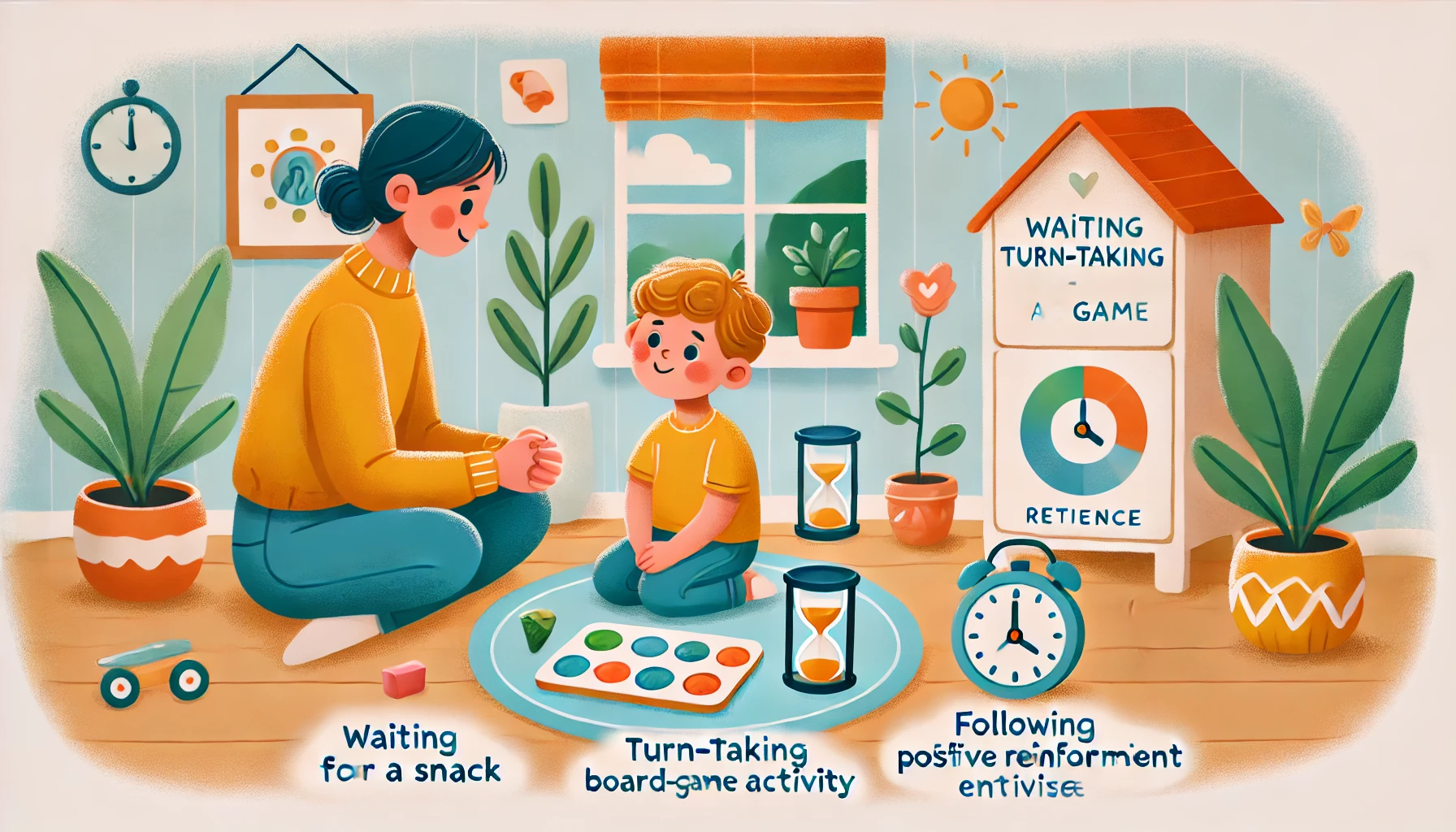How to Teach Young Children About Patience at Home
Patience is an essential life skill that helps children develop self-control, emotional regulation, and the ability to handle frustration. Learning to wait, take turns, and stay calm in different situations prepares children for success in school, relationships, and everyday life. In this article, we’ll explore fun and practical ways to teach patience at home.
Why Teaching Patience is Important
- Improves emotional regulation – Helps children manage frustration and delays.
- Encourages better social interactions – Teaches kids to take turns and respect others.
- Develops problem-solving skills – Helps children think before reacting.
- Enhances focus and perseverance – Encourages kids to stay committed to tasks.
- Builds resilience – Helps children adapt to situations that require waiting or effort.
1. Use Games to Make Waiting Fun
Playing games that require turn-taking and delayed gratification helps children develop patience.
Activity Idea:
- Board games – Play games like “Candy Land” or “Chutes and Ladders” that require waiting for turns.
- Simon Says – Encourages listening and waiting before acting.
- Red Light, Green Light – Teaches impulse control while having fun.
What Kids Learn:
- The importance of waiting their turn
- Self-discipline in following rules
- How to control impulses
2. Teach Patience Through Daily Routines
Building patience into everyday activities helps children practice waiting in a natural way.
Activity Idea:
- Set a timer when children ask for something, like a snack or playtime.
- Encourage them to help with cooking, explaining that food takes time to prepare.
- Have them plant a small garden to watch seeds grow over time.
What Kids Learn:
- Understanding that good things take time
- How to manage anticipation
- Delayed gratification skills
3. Model Patience in Your Own Behavior
Children learn patience by observing how adults handle waiting and challenges.
Activity Idea:
- Stay calm in traffic or long lines, saying, “I know waiting is hard, but we can use this time to talk or play a game.”
- If something doesn’t go as planned, say, “That’s okay. We’ll try again later.”
- Show patience when teaching new skills, like tying shoes or buttoning a coat.
What Kids Learn:
- How to stay calm during delays
- That patience is a valuable skill for everyday life
- Positive coping strategies for frustration
4. Read Stories About Patience
Books help children understand the value of waiting and perseverance.
Activity Idea:
- Choose books where characters learn to be patient, like Waiting Is Not Easy! by Mo Willems.
- After reading, discuss the story: “How did the character feel while waiting? What helped them be patient?”
- Encourage children to relate the story to their own experiences.
What Kids Learn:
- The benefits of patience in different situations
- How to handle frustration positively
- The importance of perseverance
5. Reward and Praise Patient Behavior
Reinforcing patient actions encourages children to continue practicing.
Activity Idea:
- Use a “patience jar” where children add a bead each time they wait calmly.
- Say, “I saw how patient you were while waiting for your turn. Great job!”
- Give small rewards, like extra bedtime stories, for practicing patience consistently.
What Kids Learn:
- Positive reinforcement for good behavior
- How patience is valued and appreciated
- Motivation to keep practicing self-control
6. Introduce Mindfulness and Deep Breathing Exercises
Teaching children relaxation techniques helps them stay calm while waiting.
Activity Idea:
- Practice deep breathing: “Breathe in like you’re smelling a flower, then blow out like you’re cooling hot cocoa.”
- Use counting techniques, like counting to 10 before reacting.
- Try yoga or stretching as a way to slow down and stay present.
What Kids Learn:
- How to self-regulate emotions
- Techniques to stay calm in frustrating situations
- The importance of mindfulness in daily life
7. Encourage Problem-Solving Instead of Instant Solutions
Letting children struggle a little before stepping in teaches perseverance.
Activity Idea:
- If a child is struggling with a puzzle, say, “Try another way before I help you.”
- Encourage them to tie their shoes or zip a jacket on their own before offering assistance.
- When they express frustration, guide them to think of solutions instead of giving up.
What Kids Learn:
- The value of effort and persistence
- Confidence in solving problems independently
- How to manage frustration without immediate solutions
8. Create “Waiting Challenges”
Practicing waiting in fun ways helps children build patience naturally.
Activity Idea:
- Set a challenge: “Let’s see if we can wait five minutes before eating our snack!”
- Use delayed rewards, like promising an extra bedtime story if they wait calmly for something.
- Encourage children to observe and describe things around them while waiting in line or at appointments.
What Kids Learn:
- How to manage waiting in real-life situations
- That waiting can be enjoyable with the right mindset
- Patience as a skill that improves over time
Final Thoughts
Teaching patience at home helps children develop self-control, resilience, and emotional strength. By using games, daily routines, positive reinforcement, and mindfulness techniques, parents can help children build the skills needed to handle waiting and frustration in a healthy way.
